- 10 AOÛT
- INDI-UNI : 
PRE-INSCRIPTION : 15 Juin – 15 Août
PRE-REGISTRATION: June 15th - August 15th
- ROYAUME UNI – 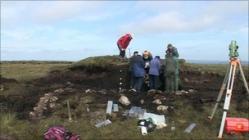 Dartmoor - Archaeologists have begun excavating a prehistoric burial chamber on Dartmoor in Devon. The burial chamber, known as a cist, is on Whitehorse Hill, near Chagford. It was discovered 10 years ago when one its stones fell out of the peat which had been concealing it. Dartmoor National Parks Authority (DNPA) said it was over 100 years since a burial chamber on Dartmoor had been excavated. It said the chamber was unusual because it was not near any other known archaeological sites. Archaeologists hope to analyse buried pollen, insects and charcoal in the peat to establish details of the surrounding landscape when the chamber was created. They are also looking for artefacts deposited as part of the burial ritual, including pottery, beads and stone tools. It is believed the burial took place about 5,000 years ago. DNPA said the prehistoric cists found on Dartmoor were chest-like structures, usually sunk into the ground, with two long granite side slabs and two end slabs set between the sides and covered with a large slab. There are nearly 200 surviving cists on the moor. The results of the excavation at Whitehorse Hill will be published later in the year.
Dartmoor - Archaeologists have begun excavating a prehistoric burial chamber on Dartmoor in Devon. The burial chamber, known as a cist, is on Whitehorse Hill, near Chagford. It was discovered 10 years ago when one its stones fell out of the peat which had been concealing it. Dartmoor National Parks Authority (DNPA) said it was over 100 years since a burial chamber on Dartmoor had been excavated. It said the chamber was unusual because it was not near any other known archaeological sites. Archaeologists hope to analyse buried pollen, insects and charcoal in the peat to establish details of the surrounding landscape when the chamber was created. They are also looking for artefacts deposited as part of the burial ritual, including pottery, beads and stone tools. It is believed the burial took place about 5,000 years ago. DNPA said the prehistoric cists found on Dartmoor were chest-like structures, usually sunk into the ground, with two long granite side slabs and two end slabs set between the sides and covered with a large slab. There are nearly 200 surviving cists on the moor. The results of the excavation at Whitehorse Hill will be published later in the year.
http://www.bbc.co.uk/news/uk-england-devon-14468394
- FRANCE – 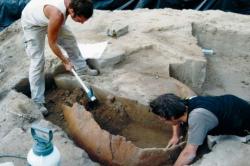 Prigonrieux – Fin 2009, dans la phase de diagnostic préalable à la construction de la voie de contournement ouest de Bergerac, les archéologues du département sont tombés sur des « tranchées positives », comme l'explique Ewen Ihuel, le responsable du chantier. « Lors des sondages effectués, on a repéré des planches de bois qui dateraient du néolithique (une période de la Préhistoire située entre -5000 et -2200). Ce qui signifie qu'il y a probablement eu des habitations. Le but, c'est de savoir de quelle nature étaient les occupations à cette période inconnue pour nous. »« Mais pour y parvenir, on doit d'abord étudier les couches de sédiments postérieures : la période médiévale, antique, celle de l'Âge du Fer, et enfin celle de l'Âge du Bronze », poursuit le chef de service. Depuis un peu plus d'un mois, 14 archéologues s'échinent donc, jour après jour, à un travail de fourmi : éplucher les couches de la terre périgourdine pour en extraire les vestiges sur ces rives d'un ancien chenal de rivière. D'après Ewen Ihuel, « on a très peu de données sur ce qu'était la Dordogne pendant le néolithique. Ces fouilles devraient nous permettre de combler une lacune régionale et de compléter nos informations sur cette période ». Alors que les fouilles devraient s'intensifier dans les prochains jours, le chantier a d'ores et déjà réservé quelques surprises. Comme la découverte d'un four en terre cuite, « qui date très certainement de l'époque médiévale ». « On ne s'y attendait pas du tout. En plus, il est exceptionnellement bien conservé », insiste-t-il.
Prigonrieux – Fin 2009, dans la phase de diagnostic préalable à la construction de la voie de contournement ouest de Bergerac, les archéologues du département sont tombés sur des « tranchées positives », comme l'explique Ewen Ihuel, le responsable du chantier. « Lors des sondages effectués, on a repéré des planches de bois qui dateraient du néolithique (une période de la Préhistoire située entre -5000 et -2200). Ce qui signifie qu'il y a probablement eu des habitations. Le but, c'est de savoir de quelle nature étaient les occupations à cette période inconnue pour nous. »« Mais pour y parvenir, on doit d'abord étudier les couches de sédiments postérieures : la période médiévale, antique, celle de l'Âge du Fer, et enfin celle de l'Âge du Bronze », poursuit le chef de service. Depuis un peu plus d'un mois, 14 archéologues s'échinent donc, jour après jour, à un travail de fourmi : éplucher les couches de la terre périgourdine pour en extraire les vestiges sur ces rives d'un ancien chenal de rivière. D'après Ewen Ihuel, « on a très peu de données sur ce qu'était la Dordogne pendant le néolithique. Ces fouilles devraient nous permettre de combler une lacune régionale et de compléter nos informations sur cette période ». Alors que les fouilles devraient s'intensifier dans les prochains jours, le chantier a d'ores et déjà réservé quelques surprises. Comme la découverte d'un four en terre cuite, « qui date très certainement de l'époque médiévale ». « On ne s'y attendait pas du tout. En plus, il est exceptionnellement bien conservé », insiste-t-il.
http://www.sudouest.fr/2011/08/10/a-prigonrieux-la-terre-a-des-choses-a-raconter-471550-726.php
- FRANCE - 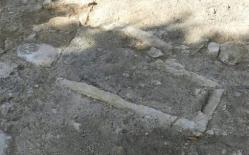 Brioux-sur-Boutonne - Les fouilles d'observation ont débuté lundi sur la place de la mairie et se poursuivent jusqu'à vendredi sur toute la longueur de la future voirie. Ces travaux sont réalisés par deux archéologues de l'INRAP sur une partie du territoire inscrit au projet d'aménagement de la place de la Mairie et du champ de foire. Dès lundi, un premier sondage d'observation a permis de mettre au jour des maçonneries et les vestiges de plusieurs sarcophages. Face à ces trouvailles, deux spécialistes supplémentaires ainsi qu'un topographe devaient arriver ce mercredi pour examiner le site plus en détail.
Brioux-sur-Boutonne - Les fouilles d'observation ont débuté lundi sur la place de la mairie et se poursuivent jusqu'à vendredi sur toute la longueur de la future voirie. Ces travaux sont réalisés par deux archéologues de l'INRAP sur une partie du territoire inscrit au projet d'aménagement de la place de la Mairie et du champ de foire. Dès lundi, un premier sondage d'observation a permis de mettre au jour des maçonneries et les vestiges de plusieurs sarcophages. Face à ces trouvailles, deux spécialistes supplémentaires ainsi qu'un topographe devaient arriver ce mercredi pour examiner le site plus en détail.
http://www.lanouvellerepublique.fr/deux-sevres/ACTUALITE/Infos-Departementales/Au-moins-trois-sarcophages-decouverts
- FRANCE – 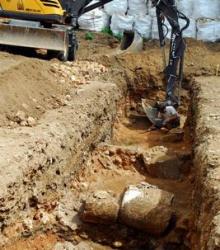
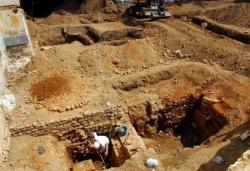 Poitiers - Al'arrière de l'hôtel de ville, les tranchées seront rebouchées dès vendredi sur le site des futurs jardins de Puygarreau à l'issue de dix jours consacrés au diagnostic archéologique des lieux. Cette courte période a permis à l'équipe de quatre personnes pilotée par Anne Jégouzo, archéologue à l'Inrap d'entamer la partie visible de leur mission. Quoi qu'il en soit, dès aujourd'hui le site a révélé des vestiges à la hauteur des attentes des archéologues. « C'est passionnant comme à chaque fois qu'on fait un trou dans Poitiers », résume Anne Jégouzo. « Les tranchées ouvertes ne portent que sur 5 à 10 % du site, on est sur du monumental, pas des vestiges exceptionnels mais scientifiquement intéressants. » Parmi les niveaux antiques très bien conservés dès environ 60 cm sous le niveau actuel, bâtiments, sols et colonnades apparaissent. Bâtiments publics ou privés ? « On ne sait pas trop, on a trop peu d'éléments. L'occupation s'étale du Haut au Bas Empire romain, du tout début du I er siècle à la fin du III e . On a trois colonnes écroulées sur place, on peut parler de colonnade », constate Anne Jégouzo tout en précisant la difficulté de comprendre pour l'heure l'organisation du site. « Aller plus loin, c'est très délicat, explique-t-elle, on ne peut émettre que des hypothèses tant que le site n'est pas fouillé ».
Poitiers - Al'arrière de l'hôtel de ville, les tranchées seront rebouchées dès vendredi sur le site des futurs jardins de Puygarreau à l'issue de dix jours consacrés au diagnostic archéologique des lieux. Cette courte période a permis à l'équipe de quatre personnes pilotée par Anne Jégouzo, archéologue à l'Inrap d'entamer la partie visible de leur mission. Quoi qu'il en soit, dès aujourd'hui le site a révélé des vestiges à la hauteur des attentes des archéologues. « C'est passionnant comme à chaque fois qu'on fait un trou dans Poitiers », résume Anne Jégouzo. « Les tranchées ouvertes ne portent que sur 5 à 10 % du site, on est sur du monumental, pas des vestiges exceptionnels mais scientifiquement intéressants. » Parmi les niveaux antiques très bien conservés dès environ 60 cm sous le niveau actuel, bâtiments, sols et colonnades apparaissent. Bâtiments publics ou privés ? « On ne sait pas trop, on a trop peu d'éléments. L'occupation s'étale du Haut au Bas Empire romain, du tout début du I er siècle à la fin du III e . On a trois colonnes écroulées sur place, on peut parler de colonnade », constate Anne Jégouzo tout en précisant la difficulté de comprendre pour l'heure l'organisation du site. « Aller plus loin, c'est très délicat, explique-t-elle, on ne peut émettre que des hypothèses tant que le site n'est pas fouillé ».
http://www.lanouvellerepublique.fr/LOISIRS/Patrimoine-tourisme/Sondages-archeologiques-bientot-recouverts
- INDE – Annigeri - The findings of a team of archaeologists throw some new light on the skulls and bones found in the Dharwad region. Analysing the way of the disposal of the dead, the condition of the skeletal remains and their stratigraphical details, the team in its report on Archaeological Excavation at Annigeri, to be submitted to the government soon, has concluded they were the remains of those who died during Davgi-bara (Skull Famine) of 1789-92. The huge number of skulls — about 600 — makes this the largest single human burial in India or elsewhere, said the team, which started excavation works on January 12. Quoting experts’ opinion, sources told Express: “It is the rarest of the burials executed for the victims of a natural calamity. It was a community burial. All other theories, like large-scale massacre of traitors, slaughter of prisoners of war and religious homicide, cannot be validated.” The experts also dispelled the theory that it was a collection of remains made by occult practitioners of Vamachara (witchcraft).The experts said one ghastly natural calamity that happened in the Deccan in particular, and south India in general — and well-recorded in the history of the region — was the severe famine of 1789-92. This famine is remembered even now in folklore as ‘bones lay unburied, whitening roads and fields. The ground was covered with skulls of the unburied’. About eleven million people are estimated to have died during 1789-92 due to starvation and epidemics.
http://ibnlive.in.com/news/what-is-behind-the-skulls-a-natural-calamity/174444-60-115.html
- ROYAUME UNI – 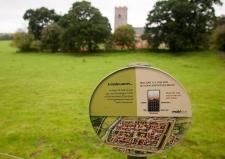 Venta Icenorum - Excavations at the Roman town of Venta Icenorum, Caistor St Edmund, near Norwich. Starting this Saturday , Dr Bowden and his team will be excavating parts of the Roman forum that was first discovered during the 1929-35 excavations. They hope to find out when the forum was built and what happened to it in the later Roman period. The 1930s excavators thought that it was destroyed by fire and lay in ruins for around 100 years before being rebuilt. The new excavations will look for further evidence of this blaze. The team will also be digging in the north-west of the town, looking for signs of what happened at Caistor after the Roman period and trying to find out whether the walled town was occupied during the AngloSaxon period, before it was eventually overshadowed by the rise of Norwich.
Venta Icenorum - Excavations at the Roman town of Venta Icenorum, Caistor St Edmund, near Norwich. Starting this Saturday , Dr Bowden and his team will be excavating parts of the Roman forum that was first discovered during the 1929-35 excavations. They hope to find out when the forum was built and what happened to it in the later Roman period. The 1930s excavators thought that it was destroyed by fire and lay in ruins for around 100 years before being rebuilt. The new excavations will look for further evidence of this blaze. The team will also be digging in the north-west of the town, looking for signs of what happened at Caistor after the Roman period and trying to find out whether the walled town was occupied during the AngloSaxon period, before it was eventually overshadowed by the rise of Norwich.
http://www.eveningnews24.co.uk/news/excavations_open_to_the_public_at_caistor_st_edmund_roman_town_near_norwich_this_weekend_1_987977
- USA - Hugh Butler Lake - University of Nebraska State Museum's Nebraska Archaeological Survey is conducting further archaeological investigations at several prehistoric sites this summer at Hugh Butler Lake in Frontier County. Test excavations are being conducted at six prehistoric archaeological sites within the boundaries of the lake, which is impounded by Red Willow Dam. This testing program is built upon recent archaeological surveys within the reservoir area carried out by the Nebraska Archaeological Survey in 2007 and 2010 and the Denver Museum of Nature and Science in 2005. One of these sites contains bison bones, chipped stone tools and several small cooking pits. This site may represent a small meat and plant processing location near Red Willow Creek. Evidence suggests that Plains people visited this location several times between 200 B.C. and 1200 A.D. Past archaeological investigations at Hugh Butler Lake and Medicine Creek Reservoir, as well as neighboring lands administered by the Bureau of Reclamation, have made significant contributions to knowledge and understanding of Native American life throughout the Great Plains region.
http://media-newswire.com/release_1157171.html
- ARMENIE – 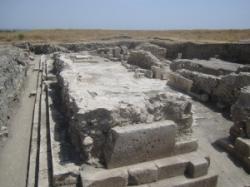 – Dikranagerd - Recent archaeological activities are yielding new and exciting finds in the ancient city of Dikranagerd, located in Artsakh. Dikranagerd, the city built by Dikran the Great, was discovered in 2005. Since then, archaeologists have carried out excavations in various parts of the city and revealed such structures as the Mijnaberd Fortress and the Basilica Church. Archaeologists now believe that Dikranagerd, founded in the first century B.C., was a large city with an advanced building plan and construction modes, many gardens, and a large population of several thousands. In recent months, archaeologists have discovered a district with a territory of six to seven hectares. They also located a cemetery and upon, further excavations, discovered that the dead were buried with property, including coins. A museum and storage facility for the artifacts is under construction in Stepanakert. In the meantime, items that require special storage conditions are being kept at Yerevan State University’s archaeology lab. The rest, totaling over 3,000 items, are currently on exhibit at the Dikranagerd Museum. Between 300 and 800 artifacts are unearthed each year.
– Dikranagerd - Recent archaeological activities are yielding new and exciting finds in the ancient city of Dikranagerd, located in Artsakh. Dikranagerd, the city built by Dikran the Great, was discovered in 2005. Since then, archaeologists have carried out excavations in various parts of the city and revealed such structures as the Mijnaberd Fortress and the Basilica Church. Archaeologists now believe that Dikranagerd, founded in the first century B.C., was a large city with an advanced building plan and construction modes, many gardens, and a large population of several thousands. In recent months, archaeologists have discovered a district with a territory of six to seven hectares. They also located a cemetery and upon, further excavations, discovered that the dead were buried with property, including coins. A museum and storage facility for the artifacts is under construction in Stepanakert. In the meantime, items that require special storage conditions are being kept at Yerevan State University’s archaeology lab. The rest, totaling over 3,000 items, are currently on exhibit at the Dikranagerd Museum. Between 300 and 800 artifacts are unearthed each year.
http://www.armenianweekly.com/2011/08/10/excavations-in-artsakh/
- ROYAUME UNI – 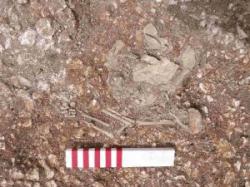 Dorchester - The buried remains of a Roman child have been uncovered during the construction of the Charles Street development in Dorchester. Stone foundations of Roman houses, painted wall plaster and coins have also been found. The Charles Street site has an important Roman heritage and lies close to the southern edge of the Roman town, Durno-varia. The row of trees along South Walks marks the line of reconstruction of the Roman town walls which was once close to the Roman public baths.
Dorchester - The buried remains of a Roman child have been uncovered during the construction of the Charles Street development in Dorchester. Stone foundations of Roman houses, painted wall plaster and coins have also been found. The Charles Street site has an important Roman heritage and lies close to the southern edge of the Roman town, Durno-varia. The row of trees along South Walks marks the line of reconstruction of the Roman town walls which was once close to the Roman public baths.
http://www.dorsetecho.co.uk/news/9187166.Roman_child_s_remains_dug_up_in_Dorchester/